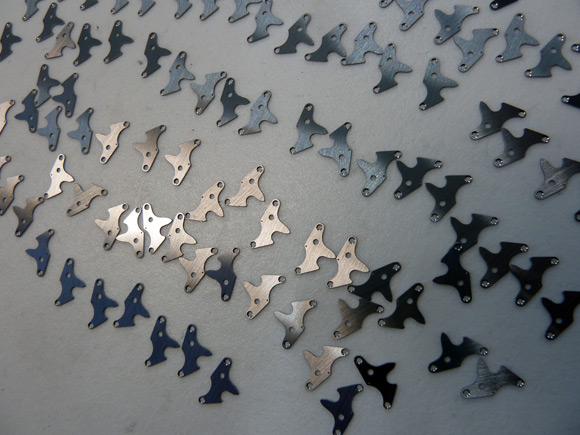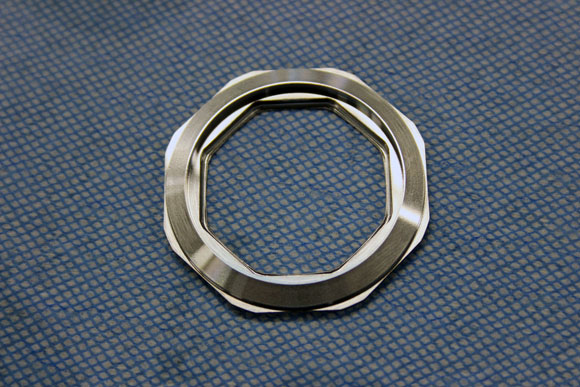In watchmaking and jewellery, it’s called a satin finish or straight graining, but a plumber is more likely to call it brushed metal. Basically it’s the same technique but in watchmaking the workmanship is much finer. Yet it is often regarded as the poor cousin of finishing techniques. It consists of scoring a metal surface with a multitude of close parallel lines to create an even texture in which each microscopic furrow catches the light from different angles. Achieving consistency is the most taxing aspect: a satin finish does not tolerate imperfection. The appearance must be unvarying and the scratches perfectly parallel.
It becomes complicated when you have to take into account two issues that are integral to horological finishing. Neighbouring but different components have to have a uniform look, which means that direction and intensity of the grain must be maintained from one surface to the next. That requires a calculated pressure applied by a steady hand. Given the fact that these tiny parts are often made by different manufacturers days apart, ensuring that the brush stroke is undeviating and parallel throughout the movement is no easy task.

Of all the surface finishes, satin brushing is the one spoken of the least, if not entirely ignored. While Geneva stripes dominate the bridges, circular graining decorates the baseplates and polishing makes the chamfers gleam, the satin finish is relegated to the less visible parts of the movement. In fact it is mostly found on the flanks of a component. It at least goes to prove that watchmaking leaves few surfaces unattended and that the work of finishing can, if allowed to, reach into the smallest corners of every component. Nevertheless it’s a pity that this finishing technique that gives such attractive results is generally hidden from view.

However satin brushing comes into its own outside the movement. It is mostly found on watchcases and bracelets as the foil to polishing, offering a contrasting matt lustre to shiny reflecting surfaces. But that was before techniques of shot-peening and sand blasting became sufficiently developed to stealthily usurp its position.








